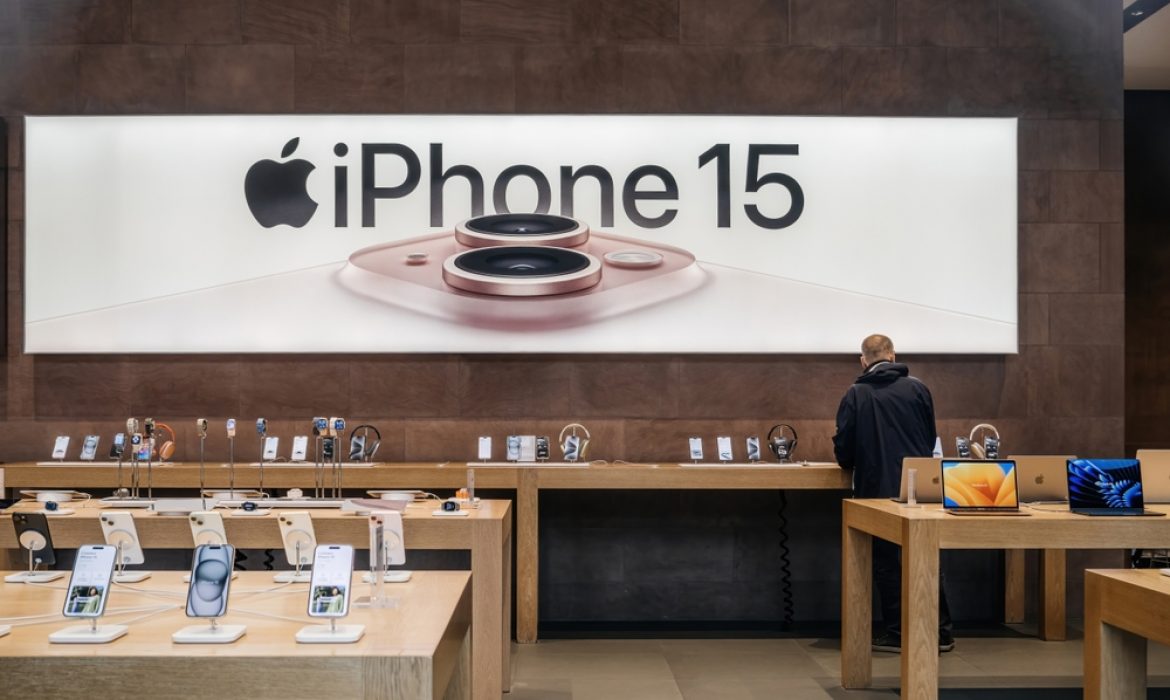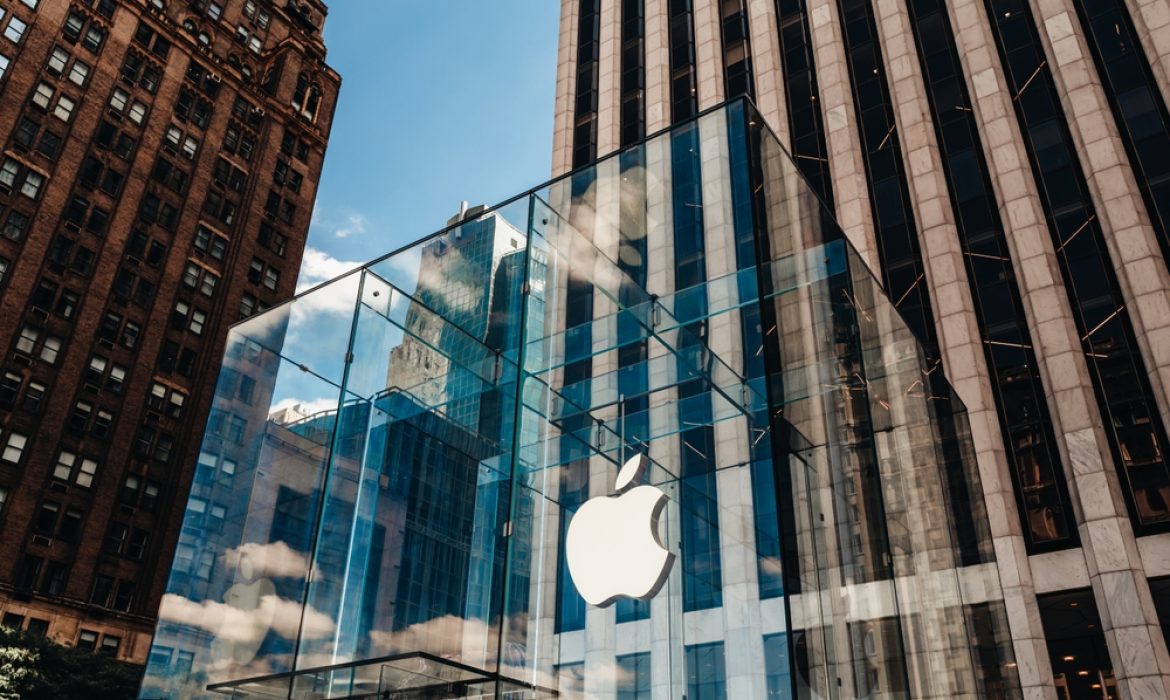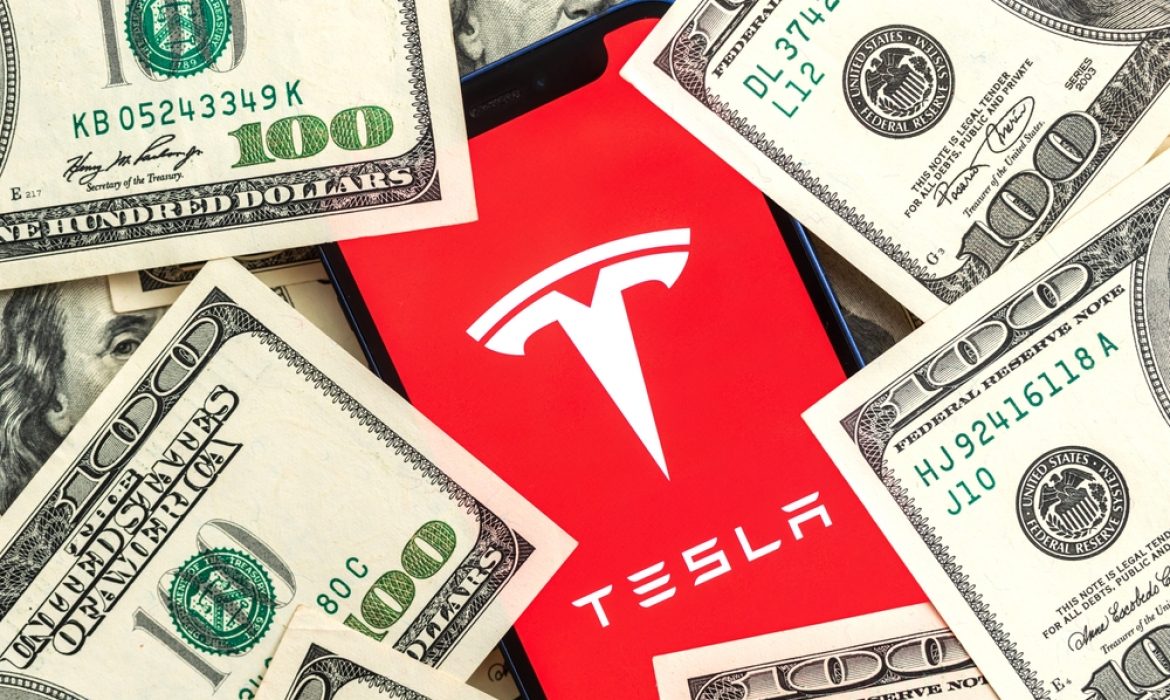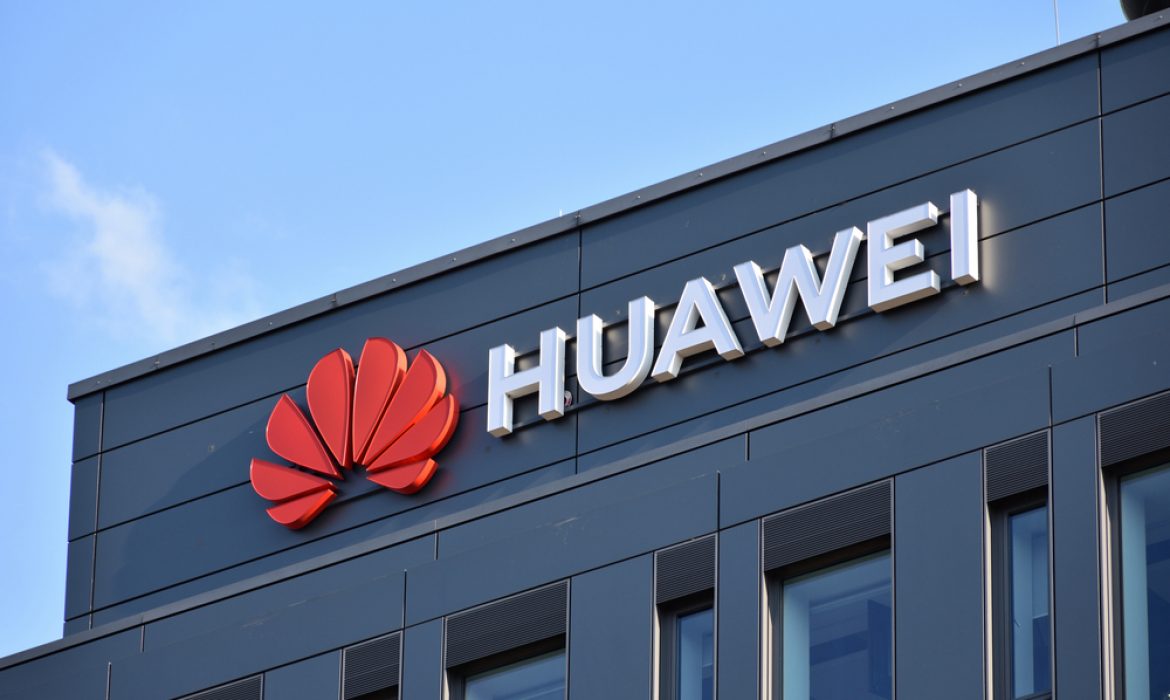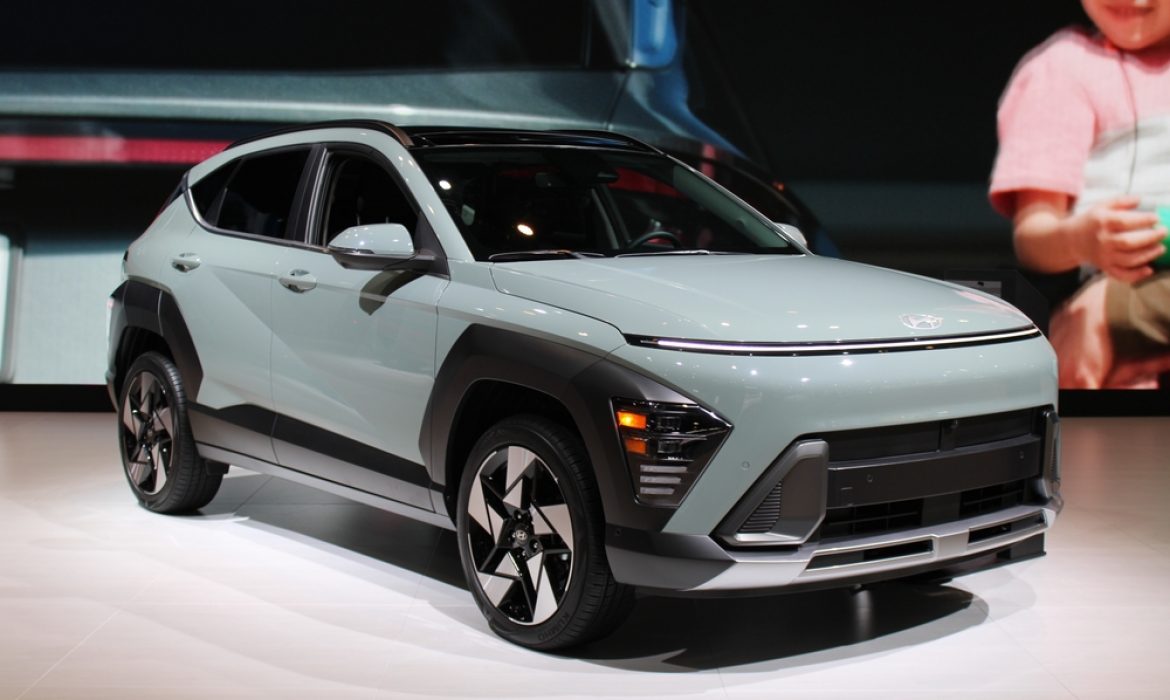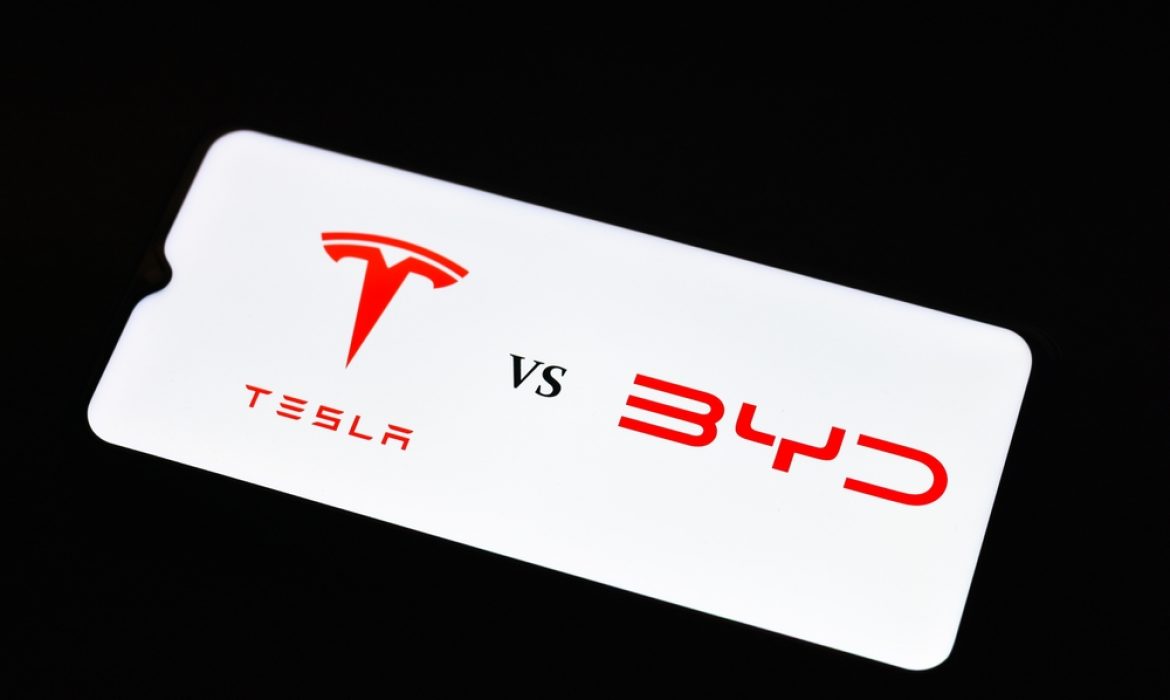Apple Struggles Against Chinese Competitors as iPhone Shipments Decline
The global smartphone market witnessed a resurgence in the first quarter of the year, according to a report by IDC. However, amidst this overall growth, Apple Inc. faced a significant setback with a sharp decline in iPhone shipments, marking its worst performance since the onset of the Covid-19 pandemic.
Decline in iPhone Shipments
Since the launch of its latest-generation iPhone in September, Apple has encountered challenges in sustaining sales, particularly in China, the world’s largest smartphone market. IDC data reveals that iPhone shipments fell by 10 percent in the March quarter, amounting to 50.1 million units, below analysts’ forecasts. This decline, a 9.6 percent year-on-year drop, is the most substantial for Apple since the disruptions caused by the Covid-19 blockade in 2022.
Impact of Chinese Rivals
Apple’s struggle in China can be attributed to the resurgence of competitors like Huawei Technologies Co. and Xiaomi Corp., along with Beijing’s restrictions on foreign devices in workplaces. The competitive landscape has intensified, with Huawei’s unexpected comeback last year posing a formidable challenge to Apple’s share of the premium Chinese market.
Market Dynamics
While Apple faced a downturn, other players in the smartphone market experienced growth. Samsung Electronics Co. regained its lead in the March quarter, and budget brands like Transsion and Xiaomi recorded significant increases in shipments, narrowing the gap with Apple.
Insights from IDC
Nabila Popal, research director at IDC, commented on the changing dynamics of the smartphone market. Despite Apple’s resilience in recent years, maintaining its growth rate and peak share will be challenging, especially with the expected faster growth of Android in 2024.
Consumer Behavior and Strategies
Consumers’ preference for premium models, coupled with longer ownership cycles, has prompted a rise in average selling prices for phones. Apple, known for its premium pricing strategy, has resorted to discounts to stimulate sales, including discounts of up to $180 in China.
Outlook for Apple
Apple’s strategic focus on the Chinese market is evident from the recent opening of a flagship store in Shanghai’s financial center. However, the company faces the task of retaining its existing customer base while fending off competition from local players offering compelling alternatives.
Conclusion
Despite Apple’s historical resilience, the latest data underscores the challenges it faces in maintaining its position in the global smartphone market, particularly in China. As competition intensifies and consumer preferences evolve, Apple must adapt its strategies to navigate the ever-changing landscape.
BlackRock Assets Soar to Record $10.5 Trillion Amid Market Surge
BlackRock, the world’s largest asset manager, has reported record-breaking assets under management (AUM) of $10.5 trillion in the first quarter of the year, accompanied by a remarkable 36% surge in profit. The company attributed this exceptional performance to the buoyant global equity markets, which propelled investment advisory and administration fees.
The first quarter witnessed a notable rally in global stock markets, driven by the anticipation of major central banks pivoting towards interest rate cuts rather than tightening monetary policies. The MSCI’s global stock performance gauge surged by 7.7%, while the S&P 500 experienced a substantial 10% jump during this period.
BlackRock’s AUM experienced a remarkable 15% surge compared to the previous year, while its investment advisory and administration fees climbed nearly 8.8% to reach $3.63 billion. Larry Fink, the company’s chairman and CEO, expressed optimism about the future, citing unprecedented opportunities for BlackRock, its clients, and shareholders. He highlighted potential investment avenues in artificial intelligence, specific emerging markets, and infrastructure development.
In line with its expansion strategy, BlackRock announced the acquisition of Global Infrastructure Partners for $12.5 billion in January, aiming to venture into private markets and alternative assets through infrastructure investments globally. The acquisition is expected to be finalized in the third quarter of the year.
Despite the impressive financial results, BlackRock observed a decrease in total net inflows to $57 billion from $110 billion the previous year. This decline was partly attributed to seasonal outflows from institutional money market funds at the end of March. However, BlackRock’s President, Rob Kapito, noted that inflation concerns and an inverted Treasury yield curve were impacting allocations to fixed income.
Analysts foresee a potential resurgence in asset management industry flows following interest rate cuts, which could incentivize the movement of cash into riskier assets. Exchange-traded funds (ETFs) captured the majority of inflows, with BlackRock’s iShares Bitcoin Trust drawing significant attention, amassing $14 billion in net inflows since its launch in January.
BlackRock’s total revenue surged by 11% to $4.73 billion in the quarter, driven by higher performance fees and technology revenue, as well as the impact of higher markets on average AUM. The company’s robust performance underscores its position as a leading provider of investment management and technology services globally.
Telegram Surpasses Expectations with Positive Cash Flow in Q1
Telegram, the popular messaging app, has achieved positive cash flow in the first quarter of this year, marking a significant milestone for the company. Founder Pavel Durov announced that the messenger ended the quarter with a positive balance and is on track to turn a profit by the end of 2024, defying earlier projections that profitability might not be achieved until 2025.
Rapid User Growth Fuels Optimism
Durov revealed in an interview with the Financial Times that Telegram now boasts a staggering 900 million monthly users, with half of them engaging with the platform on a daily basis. This growth trajectory has positioned Telegram as one of the top six most downloaded apps worldwide, according to data from DataAI. Such rapid expansion has bolstered optimism within the company, with projections suggesting that Telegram could potentially reach billionaire status by the year’s end.
Successful Bond Sale and IPO Plans
In March, Telegram secured $330 million through a bond sale, with demand surpassing expectations, indicating investor confidence in the platform’s future prospects. Durov also disclosed that Telegram’s valuation currently stands at $30 billion, with plans to launch an initial public offering (IPO) by March 2026, further solidifying its position in the market.
Opaque Ownership Structure Raises Questions
Despite its financial success, Telegram’s ownership structure remains opaque, leaving many questions unanswered about who exactly finances the platform. The company’s decade-long journey of unprofitability has not hindered its rapid growth, fueled by non-public investor backing. Previous attempts at monetization, including advertising and premium subscriptions, fell short of covering costs, underscoring the challenges of sustaining profitability in the highly competitive tech landscape.
Monetization Efforts Underway
In a bid to diversify revenue streams, Telegram launched monetization options for channel owners on March 31. However, these features have yet to be implemented in Ukraine, where discussions among government officials regarding the regulation of social networks and messaging platforms, particularly Telegram, continue to unfold.
As Telegram navigates its path towards profitability and further expansion, its ability to capitalize on its vast user base while addressing regulatory challenges will be crucial in shaping its future trajectory in the dynamic tech industry.
Apple Delves into Home Robotics as Next Frontier Amidst Automotive Setback
Apple Inc. is embarking on a venture into personal robotics, aiming to carve a niche in what could be its next major breakthrough, insiders reveal.
Engineers at Apple have been delving into the realms of home robotics, concocting ideas for a mobile bot capable of trailing users throughout their households. Additionally, they’ve devised an advanced table-top home device employing robotics to maneuver a display, sources familiar with the matter disclose.
Despite being in the embryonic stages, this venture reflects Apple’s pressing need for fresh revenue streams. Following the abandonment of its electric vehicle project in February, coupled with the slow trajectory of its mixed-reality goggles initiative, the tech giant is eagerly seeking alternative growth avenues.
Venturing into robotics offers Apple a promising trajectory into consumers’ domestic spaces, capitalizing on the strides made in artificial intelligence. However, the specifics of Apple’s approach remain shrouded in ambiguity, with internal debates still ongoing.
Apple’s foray into robotics unfolds within its hardware engineering division and AI and machine-learning group, spearheaded by John Giannandrea. Matt Costello and Brian Lynch, executives specializing in home products, are at the helm of hardware development. Nonetheless, Apple has yet to commit to either project formally, deeming them still in the nascent research phase.
The news of Apple’s robotics exploration received a lukewarm reception from investors, with stock gains tapering post Bloomberg’s disclosure. Conversely, shares of iRobot Corp., renowned for its Roomba line, briefly surged, indicative of investor optimism surrounding Apple’s potential ventures in this domain.
Having pivoted away from automotive pursuits post the EV project’s demise, Apple is redirecting its focus toward areas like the smart home market, where it hopes to solidify its standing.
Apple’s visionary table-top robotics project initially captivated senior executives, including hardware engineering chief John Ternus. However, internal debates continue to swirl around its feasibility and consumer appeal.
Apple maintains a clandestine facility near its Cupertino campus, resembling a typical household interior, serving as a hub for testing future home-centric innovations. Among these endeavors, Apple is contemplating a new home hub device, potentially integrating an iPad-like display.
While the iPhone remains Apple’s flagship revenue generator, the company is ardently pursuing its “next big thing.” However, replicating the unparalleled success of the iPhone presents a daunting challenge.
Nonetheless, Apple’s arsenal boasts a slew of projects, including an upgraded Vision Pro, touch-screen Macs, AirPods with built-in cameras, and cutting-edge health technologies. Augmenting this lineup, robotics and AI hold promise, despite Apple playing catch-up in certain facets.
Should Apple’s robotics endeavors progress, it would join the ranks of tech titans like Amazon, which introduced its Astro model in 2021. However, mainstream adoption remains a hurdle, with products like the Roomba vacuum enjoying enduring popularity.
While Apple‘s car ambitions fizzled out, the project catalyzed advancements that underpin subsequent initiatives. For instance, the neural engine, originally conceived for automotive applications, now bolsters Apple‘s AI capabilities across its product spectrum.
As Apple seeks to redefine the future of home robotics, the company is actively recruiting talent to bolster its burgeoning teams.
An excerpt from a job posting on Apple‘s website underscores the company’s dedication to shaping the future of robotics: “Our team works at the intersection of modern machine learning and robotics to shape the AI that will power the next generation of Apple products. We are looking for innovative and hardworking ML and robotics researchers and engineers that help us research, define, and develop complex intelligent robotic systems and experiences in the real world.”
Source: Bloomberg
Zoom Unveils Groundbreaking Zoom Workplace Platform
Zoom has introduced Zoom Workplace, a comprehensive AI-powered collaboration platform. This innovation aims to tackle the growing complexities stemming from dispersed teams and disconnected communication tools, which have led to increased meeting times and information overload among knowledge workers.
A recent report commissioned by Zoom highlighted that over half of knowledge workers spend significant time on tasks such as sharing notes and action items, while a staggering 80% experience information overload. To counter this trend, Zoom Workplace integrates communication, employee engagement, spaces, and productivity solutions onto a unified platform, augmented by Zoom AI Companion capabilities.
Addressing the Collaboration Paradox
Zoom Workplace seeks to address the collaboration paradox by offering a seamless experience that enhances communication, boosts employee engagement, optimizes in-person interactions, and improves overall productivity in flexible work environments. By consolidating various communication channels into a single platform, Zoom Workplace aims to streamline workflows and foster meaningful connections among team members.
The Power of Zoom AI Companion
At the core of Zoom Workplace lies Zoom AI Companion, an AI assistant designed to enhance productivity and collaboration. With features such as Ask AI Companion, users can generate materials for meetings, create agendas, and spark creative ideas effortlessly. The accuracy and speed of Zoom AI Companion surpass conventional methods, with a transcription accuracy of 95% and a fourfold increase in speed compared to web-based tools like ChatGPT-4.
Enhanced Collaboration Features
Zoom Workplace introduces several new features geared towards enhancing collaboration and teamwork. These include Zoom Team Chat, where users can create channel groups and collaborate in real-time on whiteboards and chat simultaneously. Additionally, collaborative editing and permission management capabilities for Microsoft OneDrive and Google Drive have been integrated, alongside smart name badges for Zoom Rooms to facilitate smoother interactions during meetings.
Future Developments
Zoom also announced plans to further enhance the Workplace platform by integrating features from Workquivo, a company acquired by Zoom in the previous year. This integration will enable the broadcasting of important updates, news, and events to employees through Zoom-certified devices, enhancing internal communication within organizations.
In summary, Zoom Workplace represents a significant leap forward in reimagining teamwork and collaboration in modern workplaces. With its AI-powered capabilities and comprehensive suite of features, Zoom aims to empower organizations to overcome the challenges of remote work and foster a culture of productivity and innovation.
Tesla reports first drop in sales and BYD drops almost in even more
A new chapter unfolds with Tesla’s recent sales report, marking a significant departure from its trajectory since 2020. The spotlight once again illuminates the competition between these giants, as Tesla, under Elon Musk’s stewardship, clinched another victory over BYD after the latter’s stumble in the last quarter of 2023. However, this time, there’s a twist – Tesla’s sales have experienced a dip, marking its first decline since 2020.
Tesla Electric Car Sales: Worse Than Expected
Even the renowned Troy Teslike, famed for his precise predictions on Tesla sales, found himself off the mark this time. Ironically, his forecast, among others, turned out to be the closest to reality. Tesla reported a drop in electric car sales for the first time since 2020, while BYD’s sales plummeted almost 1.5 times.
Analysts’ Expectations for Tesla Sales in Q1 2024
For the January-March period, Tesla delivered 386,810 electric vehicles to customers, marking an 8.5% decrease from the same quarter in 2023. A breakdown of Tesla’s auto sales for Q1 2024 reveals a concerning trend: a 20% drop from Q4 2023, with production figures also taking a slight hit.
Chinese Market Dynamics
While Chinese-built Tesla sales in March saw a marginal year-over-year increase, concerns linger over sluggish demand in Europe and inventory challenges in the U.S. Nevertheless, Tesla’s March sales in China provide a glimmer of hope for a potential resurgence in demand.
Factors Behind Tesla’s Disappointing Results
Tesla attributed the decline in production and sales to various factors, including the initial phase of ramping up production of the updated Model 3, plant shutdowns, and logistical challenges exacerbated by external events such as attacks on shipping and the recent arson incident at the Gigafactory in Berlin.
New Model 3 Performance and Future Prospects
With Tesla set to unveil its full financial report on April 23, the focus will shift to key financial indicators, particularly amidst concerns about dwindling profitability and intensifying competition.
BYD’s Decline Amidst Market Dynamics
Meanwhile, BYD, backed by Warren Buffett, grappled with a substantial decline in sales, attributed partly to increased competition and seasonally lower demand in the Chinese market.
Global Electric Vehicle Outlook
As per EV-Volumes estimates, global electric vehicle sales are projected to continue their upward trajectory, with expectations of reaching 17.8 million units in 2024. This growth underscores the increasing prominence of electric vehicles in the global automotive landscape.
In this unfolding narrative of electric car dominance, the tides of competition ebb and flow, shaping the future of mobility and sustainability on a global scale. As Tesla confronts its first sales setback in years, and BYD faces its own challenges, the electric vehicle market stands at a pivotal juncture, poised for further evolution and transformation.
Source https://ev-volumes.com/
Huawei’s Remarkable Recovery: Surging Revenue Marks Resilience Post-Sanctions
Huawei Technologies has announced a formidable financial performance for the year 2023, signaling a robust bounce back from the adversity of US sanctions imposed in 2019. With revenue surging to $97.48 billion and profits soaring to $12.05 billion, the tech giant’s latest figures mark its fastest revenue growth in the past four years, underscoring a resurgence that has defied earlier setbacks.
Consumer Segment Spearheads Growth
Huawei’s resurgence owes much to the buoyancy of its consumer segment, which emerged as the primary driver behind the stellar revenue figures. Clocking a remarkable 17.3% growth, the consumer business raked in $34.83 billion in revenue. Central to this segment’s success was the company’s triumphant return to the mainstream 5G smartphone market with the Mate 60, effectively navigating past the hurdles posed by US restrictions.
Diversification Pays Dividends
Beyond its consumer arm, Huawei’s diversified portfolio played a pivotal role in fueling its financial renaissance. The company’s cloud business, witnessing an impressive 20% growth, recorded revenues of $7.66 billion. Moreover, its foray into smart car software and components proved to be a strategic masterstroke, witnessing an astonishing 128.1% year-on-year surge to $0.65 billion. This diversification strategy not only cushioned the impact of sanctions but also positioned Huawei for sustained growth across multiple sectors.
A Steady Trajectory of Recovery
2023 marks the third consecutive year of growth for Huawei, a testament to its unwavering resolve in the face of adversity. Following a tumultuous period marked by a nearly one-third revenue plunge in 2021, attributed to chip reserve depletion, the company’s trajectory of recovery has been steady, albeit with revenues yet to reclaim their 2020 peak.
Honor Sale: A Strategic Windfall
A significant contributing factor to Huawei’s stellar financial performance has been the ongoing payments stemming from the sale of the Honor smartphone brand. The divestment, executed in November 2020, continues to bolster the company’s financial position, providing a crucial lifeline amidst challenging market conditions.
Huawei’s resounding success in 2023 underscores not only its capacity for resilience but also its strategic agility in navigating complex geopolitical landscapes. As the tech behemoth charts its course forward, its remarkable recovery stands as a testament to the indomitable spirit of innovation and adaptability that defines the industry’s pioneers.
Source: Reuters
Apple in Talks to Integrate Google’s Gemini AI into iPhone
Apple is reportedly in discussions with Google to incorporate the Gemini artificial intelligence engine into its iPhone lineup, according to Bloomberg’s Mark Gurman. Alongside this, there have been talks with OpenAI, the developers behind ChatGPT, indicating a potential shift in Apple’s AI strategy.
The partnership between Apple and Google, known for their longstanding search agreement, could signal a significant development in the AI industry. Google pays Apple substantial sums annually to have its search engine featured as the default option on Safari, raising questions about potential antitrust implications of this new collaboration.
Gemini’s integration into the iPhone platform would provide Google access to billions of users, but it also suggests that Apple may not be as advanced in AI development as previously thought. This move may invite further scrutiny from antitrust regulators, especially considering ongoing legal challenges regarding Google’s search partnership with Apple.
While Apple is working on AI features for iOS 18, they primarily focus on device-based functionalities rather than cloud services. Thus, partnering with Google or OpenAI for generative AI capabilities like image creation and text generation seems to be the chosen path for now.
Gemini, however, has faced controversies, such as generating inaccurate race-related queries, prompting Google to suspend certain functionalities. Despite this, Apple seems keen on leveraging external AI models, possibly to expedite its AI initiatives.
Apple CEO Tim Cook has hinted at a significant AI announcement in 2024, suggesting that the integration of Gemini or other AI models could be part of this unveiling. Utilizing third-party AI features could also mitigate Apple’s liability, according to sources familiar with the situation.
As discussions between Apple and Google progress, the specifics of the agreement, including terms, branding, and implementation methods, remain undisclosed. Nevertheless, if finalized, this collaboration could reshape the landscape of AI integration in consumer devices, potentially setting new standards for innovation and user experience.
The potential incorporation of Gemini into Apple’s ecosystem highlights the growing importance of AI in technology development and underscores the complexities of navigating partnerships in the competitive tech industry.
Source : https://www.bloomberg.com/news/articles/2024-03-18/apple-in-talks-to-license-google-gemini-for-iphone-ios-18-generative-ai-tools
Hyundai’s $50 billion gamble: Bold investment to cement top-3 status in the EV market
Hyundai has unveiled plans for a monumental $50 billion investment aimed at securing its position as one of the top three EV manufacturers by 2030. This ambitious endeavor underscores Hyundai’s determination to thrive in an automotive landscape undergoing a rapid shift towards electrification.
Hyundai’s New Investment Strategy
Hyundai’s hefty investment will focus on fortifying its foothold in EV technology and software-defined vehicles (SDVs), deemed pivotal for future growth. A significant portion of the funds, approximately 35.5 trillion won ($26 billion), will be channeled into research and development (R&D) initiatives geared towards bolstering EV infrastructure and manufacturing capabilities. Additionally, an allocation of 31.1 trillion won will be dedicated to R&D endeavors centered on EV, SDV, and battery technologies.
Expanding Production Capacities
The Korean automaker intends to leverage the investment to expand its manufacturing capabilities, particularly in the realm of EV production. Notably, Hyundai plans to inaugurate a new plant in Ulsan in the first quarter of 2026, focusing on the production of an “extra-large” Genesis electric SUV. Post-launch, the plant is poised to churn out an impressive 200,000 EVs annually, further solidifying Hyundai’s presence in the EV market.
Strategic Initiatives and Product Launches
Hyundai’s strategic initiatives extend beyond bolstering manufacturing capacities. The company is set to make significant investments in IT capabilities and forge joint ventures with affiliates to propel its EV agenda forward. Furthermore, Hyundai’s subsidiary, Kia, is gearing up for the release of the affordable EV3, slated to hit markets both domestically and internationally following the completion of Kia’s Gwangmyeong plant in the second quarter of this year.
Genesis’s Technological Showcase
The unveiling of Genesis’s Neolun Concept, a sleek full-size luxury electric SUV, serves as a testament to Hyundai’s technological prowess and commitment to innovation. This flagship vehicle underscores Hyundai’s aspiration to lead the charge in the EV market, positioning itself as a formidable competitor against industry giants.
Hyundai’s Vision for 2030
With aspirations to become one of the top three electric vehicle manufacturers by 2030, Hyundai aims to roll out a diverse lineup comprising 31 electric vehicles, with an annual production volume projected at 1.51 million units. Hyundai’s dedicated EV platform, E-GMP, which underpins models such as the IONIQ 5, IONIQ 6, Kia EV6, and Genesis GV60, is poised to play a pivotal role in achieving this ambitious target.
A Paradigm Shift in Automotive Industry
Hyundai’s audacious investment heralds a paradigm shift in the automotive industry, emphasizing the pivotal role of electrification in shaping the future of mobility. As Hyundai steers towards a future dominated by electric vehicles, it stands poised to redefine industry standards and solidify its position as a trailblazer in the EV market.
Source: Electrek https://electrek.co/2024/03/27/hyundai-reveals-ambitious-50b-investment-charge-up-ev-sales/
BYD Challenges Tesla for Electric Car Sales Crown in 2024
According to TrendForce, global sales of NEVs (New Energy Vehicles), encompassing BEVs (Battery Electric Vehicles), PHEVs (Plug-in Hybrid Electric Vehicles), and FCVs (Fuel Cell Vehicles), are expected to hit 13.03 million units in 2023, marking a growth rate of 29.8%. However, this represents a significant slowdown from the 54.2% growth rate witnessed in 2022. BEVs make up a substantial portion, amounting to 9.11 million units with a growth rate of 24%, while PHEVs reach 3.91 million units, boasting a more impressive growth rate of 45%.
China continues to hold the lion’s share of the NEV market, accounting for approximately 60% of the global market. Nevertheless, growth in China is stagnating due to the high base effect, and lackluster sales growth in other regions fails to compensate for this decline. Consequently, NEV sales growth is anticipated to decelerate, with an estimated 16.87 million units projected to be sold in 2024, accompanied by a growth rate of 29.5%.
In the realm of BEVs, Tesla remains the frontrunner in 2023 with a market share of 19.9%. However, BYD emerges as a formidable challenger, narrowing the sales gap with Tesla to a mere 248,000 units. BYD’s success is attributed to its consistent performance in China and its expanding global presence, bolstered by the activation of overseas bases. TrendForce suggests that BYD has the potential to disrupt Tesla’s dominance in the BEV market for the current year.
Meanwhile, GAC Aion secures the third position for the first time, with SAIC-GM-Wuling and Volkswagen slipping to fourth and fifth place respectively. Luxury brands BMW and Mercedes-Benz intensify their electrification efforts, securing sixth and eighth places respectively. Hyundai Group, encompassing Hyundai and KIA, maintains their positions thanks to sustained sales growth.
In the PHEV market, BYD and Li Auto emerge as the top two players, with Li Auto posting an impressive 182% growth rate in 2023. Li Auto’s rapid market share growth is fueled by its strategic focus on mid-size and large SUVs, catering to family-oriented consumers. Traditional stalwarts BMW and Mercedes-Benz occupy the third to fifth spots, albeit facing declines in Europe due to sluggish PHEV sales.
Moreover, Chinese brands like Changan, Denza, and Deepal debut in the top ten rankings, underlining the competitive edge of the Chinese market. TrendForce anticipates that as Chinese brands accelerate PHEV exports, established automakers will face further pressure on growth margins.
Despite China’s slowing domestic growth, automakers are aggressively establishing overseas bases to sustain momentum. Chinese brands enjoy significant advantages in terms of vehicle diversity, pricing, and smart features. Overcoming challenges associated with reliance on a single production site is crucial for sustained growth. However, the potential escalation of trade barriers may hinder the global spread of Chinese NEVs.
In the U.S., a ban on Chinese-made battery components starting in 2024 threatens the eligibility of many EV models for subsidies. While automakers like GM offer equivalent federal tax credits of $7,500, disruptions in the Chinese supply chain hinder efforts to drive down EV prices, posing additional challenges for the industry. Source: TrendForce
